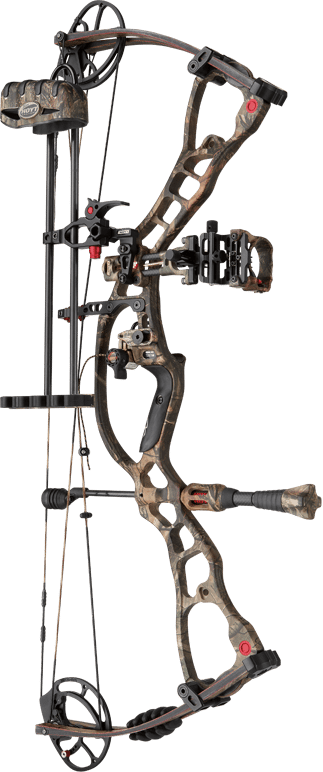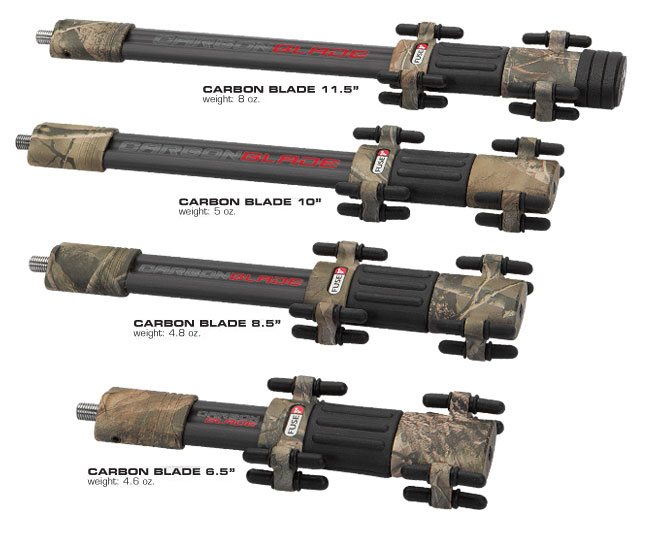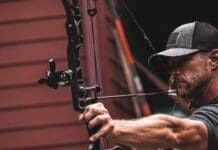Whip the Wind
Tools to Keep Your Arrows on Target
by Darin Cooper
Of all things I hate to see on a day I’m going shooting – it’s the leaves rattling and flags at attention. I can think of a lot of conditions I’d rather not shoot in, but the wind has to be the absolute worst. However, I’m still not going to skip a day of bowhunting just because the wind is blowing – especially when the wind can be a bowhunter’s biggest ally when it comes to getting close to game. You still have to consider the difficulty of making a good shot at the end of the stalk.
 If you’re a western bowhunter you’re inevitably going to deal with some windy hunting conditions. It doesn’t matter if you’re chasing caribou on the Alaska Tundra, waiting out an antelope buck on the sun baked prairie, or stalking a high-country muley in the face of an afternoon thunderstorm. Wind is part of the game so you might as well prepare for it.
If you’re a western bowhunter you’re inevitably going to deal with some windy hunting conditions. It doesn’t matter if you’re chasing caribou on the Alaska Tundra, waiting out an antelope buck on the sun baked prairie, or stalking a high-country muley in the face of an afternoon thunderstorm. Wind is part of the game so you might as well prepare for it.
There are two main factors in wind shooting. The first is being able to aim steadily, and the second is the amount the wind will cause your arrow to drift off target after it’s released.
In order to help you aim better in the wind I recommend using a QD quiver design. Removing the quiver before you shoot eliminates all the wind catching surface area of your remaining 3 – 5 arrows and their fletching plus the surface area of the hood and quiver spanner. In a cross-wind that’s a big difference and is the main reason you will never see a bow quiver on an all-out competition bow. Removing the bow quiver also helps the bow balance much better. A couple of my favorite QD quiver designs are the Tight Spot quiver and the Hoyt 4-arrow QD. Just remember to practice with the quiver on your bow too since a lot of shot opportunities arise quickly and will not allow for the time, noise, and motion required to take the quiver off.
Another good windy day equipment choice is the aerodynamic Fuse Carbon Blade stabilizer. I have used the offset and straight version of the stabilizers on my target and hunting bows. They really work and the reduction in side force on the bow is definitely noticeable on my longer target model. The shorter hunting models don’t have as much surface area to start with, but every little bit helps against a stiff cross wind.

To reduce the amount the wind can push the arrow in flight we have to focus entirely on the arrow and its components. The first major factor is shaft diameter. Wind drift is proportional to the exposed area of the object the wind is pushing. Therefore, smaller shafts are better. I have been testing Easton’s new Injection series of arrow shafts and can definitely see the difference in wind drift over my already slim Easton Axis shafts. The diameter of the Injection is 10% less than the skinny Axis and much smaller than most other commercially available carbon hunting arrows. The Easton Axis series is also a great choice if the Injection is out of your price range.
Next, you may want to consider an expandable broadhead unless you bowhunt in Idaho where expandable heads are illegal. An expandable broadhead has a more compact wind profile than a fixed blade head and will drift less. Furthermore, an expandable head will allow you to shoot much smaller vanes on your arrows while maintaining good accuracy. A small shaft combined with an expandable head and 2.25 – 3” vanes can reduce wind drift by over 50% compared to a typical carbon arrow with a large fixed blade broadhead and 4” vanes. I am not a big fan of expandable broadheads for larger game such as elk, but for mule deer, antelope, and sheep I think they can be a great option to help you shoot more accurately. The new Ulmer head sold by Trophy Taker is a good choice. I have also had good luck with G5’s T3 head and the trusty NAP Spitfire. Newer versions of the rear deploying Rage broadhead are also getting good reviews although I haven’t been able to personally shoot them to confirm their performance.

Finally, I recommend you spend a bit of time shooting your hunting setup in the wind. If you are shooting a fixed blade broadhead you’ll be surprised how much the drift will increase over your field point tipped arrows. Don’t over-do your windy day practice. I think you can create bad habits and erode your confidence. You do need to understand how much to aim off in the wind and your shooting limitations before you go into the field. A 10 mile per hour wind can reduce your effective range by 20 yards or more especially for you long range bombers out there. Understand that long range shooting in the wind is not recommended because the variables introduced by wind are amplified at longer distances. Sound equipment choices and some practice can help you bag a buck in the wind, but use good judgement. Knowing when to keep your arrow in the quiver can save you nightmares too.


















